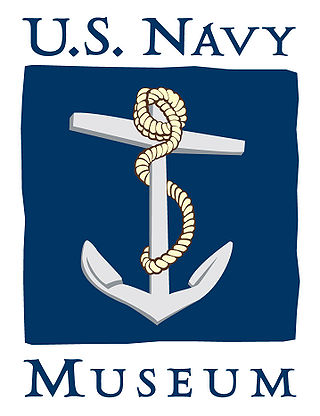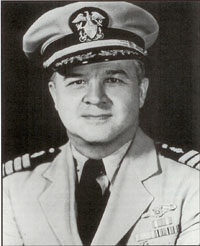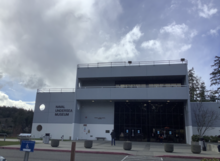
The Los Angeles class of submarines are nuclear-powered fast attack submarines (SSN) in service with the United States Navy. Also known as the 688 class after the hull number of lead vessel USS Los Angeles (SSN-688), 62 were built from 1972 to 1996, the latter 23 to an improved 688i standard. As of 2024, 24 of the Los Angeles class remain in commission—more than any other class in the world—and they account for almost half of the U.S. Navy's 50 fast attack submarines.

The Gato class of submarines were built for the United States Navy and launched in 1941–1943. Named after the lead ship of the class, USS Gato, they were the first mass-production U.S. submarine class of World War II.

USS Thresher (SSN-593) was the lead boat of her class of nuclear-powered attack submarines in the United States Navy. She was the U.S. Navy's second submarine to be named after the thresher shark.

USS Sailfish (SS-192), was a US Sargo-class submarine, originally named Squalus. As Squalus, the submarine sank off the coast of New Hampshire during test dives on 23 May 1939. The sinking drowned 26 crew members, but an ensuing rescue operation, using the McCann Rescue Chamber for the first time, saved the lives of the remaining 33 aboard. Squalus was salvaged in late 1939 and recommissioned as Sailfish in May 1940.

The Balao class was a design of United States Navy submarine used during World War II, and with 120 boats completed, the largest class of submarines in the United States Navy. An improvement on the earlier Gato class, the boats had slight internal differences. The most significant improvement was the use of thicker, higher yield strength steel in the pressure hull skins and frames, which increased their test depth to 400 feet (120 m). Tang actually achieved a depth of 612 ft (187 m) during a test dive, and exceeded that test depth when taking on water in the forward torpedo room while evading a destroyer.

The Permit-class submarine was a class of nuclear-powered fast attack submarines in service with the United States Navy from the early 1960s until 1996. They were a significant improvement on the Skipjack class, with greatly improved sonar, diving depth, and silencing. They were the forerunners of all subsequent US Navy SSN designs. They served from the 1960s through to the early 1990s, when they were decommissioned due to age. They were followed by the Sturgeon and Los Angeles classes.

The Naval Undersea Warfare Center (NUWC) is the United States Navy's full-spectrum research, development, test and evaluation, engineering and fleet support center for submarines, autonomous underwater systems, and offensive and defensive weapons systems associated with undersea warfare. It is one of the corporate laboratories of the Naval Sea Systems Command. NUWC is headquartered in Newport, Rhode Island and has two major subordinate activities: Division Newport and Division Keyport in Keyport, Washington. NUWC also controls the Fox Island facility and Gould Island. It employs more than 4,400 civilian and military personnel, with budgets over $1 billion.

Tench-class submarines were a type of submarine built for the United States Navy (USN) between 1944 and 1951. They were an improvement over the Gato and Balao classes, only about 35 to 40 tons larger, but more strongly built and with a slightly improved internal layout. One of the ballast tanks was converted to carry fuel, increasing range from 11,000 nautical miles to 16,000 nautical miles. This improvement was also made on some boats of the previous two classes. Further improvements were made beginning with SS-435, which are sometimes referred to as the Corsair class. Initial plans called for 80 to be built, but 51 were cancelled in 1944 and 1945 when it became apparent that they would not be needed to defeat Japan. The remaining 29 were commissioned between October 1944 (Tench) and February 1951 (Grenadier). The last submarine of the Tench class, as well as the last submarine which served during World War II, remaining in service with the U.S. Navy was USS Tigrone (AGSS-419) which was decommissioned on 27 June 1975.

USS Sturgeon (SSN-637), was the lead ship of her class of nuclear-powered attack submarines. She was the third ship of the United States Navy to be named for the sturgeon.

USS Greenling (SS-213), a Gato-class submarine, was the first ship of the United States Navy to be named for the greenling.

USS Bremerton (SSN-698), a Los Angeles-class submarine, is the second vessel of the United States Navy to be named for Bremerton, Washington. The contract to build her was awarded to the Electric Boat Division of General Dynamics Corporation in Groton, Connecticut on 24 January 1972 and her keel was laid down on 8 May 1976. She was launched on 22 July 1978 sponsored by Mrs. Helen Jackson, wife of Henry M. Jackson, and commissioned on 28 March 1981.

USS Jacksonville (SSN-699), a nuclear powered Los Angeles-class attack submarine, is the only vessel of the United States Navy to be named for Jacksonville, Florida.

Trieste II(DSV-1) was the successor to Trieste – the United States Navy's first bathyscaphe purchased from its Swiss designers.

Keyport is an unincorporated community and census-designated place (CDP) located in Kitsap County, Washington, United States. Situated at the eastern terminus of State Route 308 on the Kitsap Peninsula, Keyport is known for its small population and charming coastal setting. According to the 2010 census, the Keyport CDP had a total population of 554 residents.

The Royal Navy Submarine Museum at Gosport is a maritime museum tracing the international history of submarine development from the age of Alexander the Great to the present day, and particularly the history of the Royal Navy Submarine Service from the navy's first submarine, Holland 1, to the nuclear-powered Vanguard-class submarines. The museum is located close to the former shore establishment HMS Dolphin, the home of the Royal Navy Submarine Service from 1904 until 1999.

DSRV-1Mystic is a deep-submergence rescue vehicle that is rated to dive up to 5,000 feet. It was built by Lockheed for the US Navy at a construction cost of $41 million and launched 24 January 1970. It was declared fully operational in 1977 and named Mystic.

The National Museum of the United States Navy, or U.S. Navy Museum for short, is the flagship museum of the United States Navy and is located in the former Breech Mechanism Shop of the old Naval Gun Factory on the grounds of the Washington Navy Yard in Washington, D.C., United States.

Submarine Escape Immersion Equipment (SEIE), also known as Submarine Escape and Immersion Equipment, is a whole-body suit and one-man life raft that was first produced in 1952. It was designed by British company RFD Beaufort Limited and allows submariners to escape from a sunken submarine. The suit also provides protection against hypothermia and has replaced the Steinke hood rescue device. The suit allows survivors to escape a disabled submarine at depths down to 600 feet (183 m), with an ascent speed of 2–3 meters/second, at a rate of eight or more sailors per hour.

Captain Charles Wesley Shilling was an American physician who was known as a leader in the field of undersea and hyperbaric medicine, research, and education. Shilling was widely recognized as an expert on deep sea diving, naval medicine, radiation biology, and submarine capabilities. In 1939, he was Senior Medical Officer in the rescue of the submarine U.S.S. Squalus.

The Mark 6 exploder was a United States Navy torpedo exploder developed in the 1920s. It was the standard exploder of the Navy's Mark 14 torpedo and Mark 15 torpedo.






















